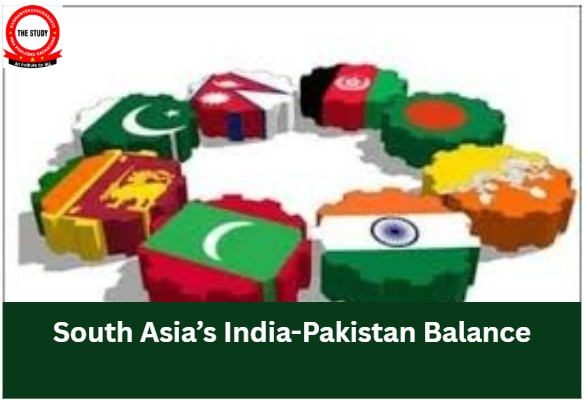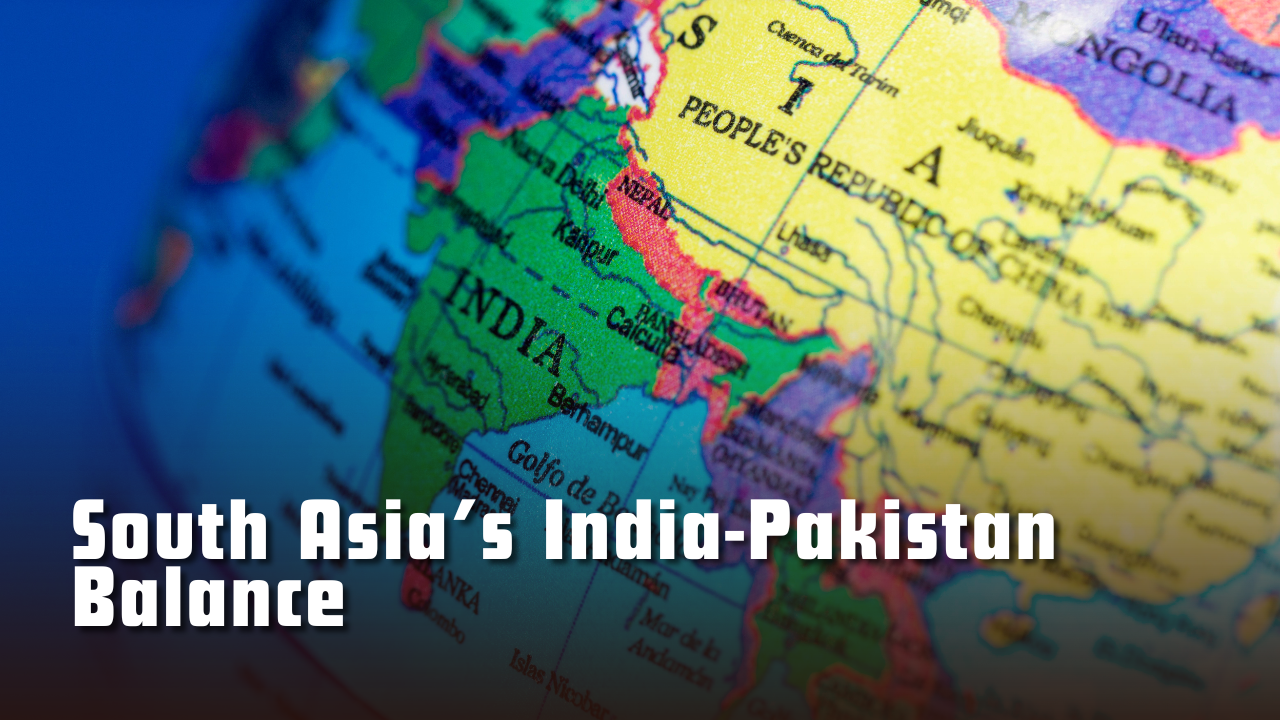Font size:
Print
South Asia’s India-Pakistan Balance
South Asia’s India-Pakistan Balance: Geopolitical Shifts, Neutrality, and Regional Strategy

Context: South Asia’s political landscape remains deeply influenced by the enduring rivalry between India and Pakistan. This dynamic has shaped the region’s diplomacy, strategic alignments, and developmental choices for decades. While India’s power continues to rise, smaller South Asian nations leverage neutrality and regional cooperation to maintain sovereignty and balance.
Historical Origins: Partition and Power Struggles
- The India-Pakistan conflict began with the 1947 Partition, triggering four major wars (1947, 1965, 1971, and 1999).
- These hostilities set the foundation for South Asia’s strategic dynamics, where most neighbouring nations—Nepal, Sri Lanka, Bangladesh, and the Maldives—opted for neutrality.
- Their stance was driven by a desire to avoid entanglement and maintain autonomy.
Neutrality as a Regional Strategy
- Countries viewed Pakistan’s revisionist ambitions as a means to check India’s dominant position.
- Afghanistan, meanwhile, resisted Pakistan’s influence by strategically siding with India—particularly over the Durand Line and Pashtun identity issues.
Nationalism and Domestic Politics
- India’s size and policy decisions often fueled anti-India sentiments in neighbouring countries, while Pakistan’s involvement in the 1971 Bangladesh Liberation War polarised domestic politics across the region.
- Leaders leveraged neutrality to maintain internal stability and avoid foreign dependency.
Contemporary Shifts: Declining Pakistan, Rising India
- Since the 2000s, Pakistan’s regional clout has diminished, owing to economic stagnation and political instability.
- In contrast, India’s economy has surged, with intra-regional trade growing from US$3.6 billion in 2003 to over US$37 billion in 2022.
Counter-Terrorism and Strategic Alignment
- India’s post-Uri attack strategy involved isolating Pakistan diplomatically and targeting terror infrastructure.
- Regional allies like Bhutan, Afghanistan, and Bangladesh condemned terrorism, with some nations pulling out of the 2016 SAARC Summit in protest against Pakistan’s role.
Operation Sindoor and 2025 Escalation
- India’s Operation Sindoor, a response to a Lashkar-e-Taiba attack in 2025, marked a new level of escalation.
- With drone strikes, missile defences, and nuclear brinkmanship, it highlighted India’s military superiority.
- Pakistan’s economic crisis (GDP growth at -0.2% in 2023) and dependency on Chinese loans (US$2.2 billion) further weakened its standing.
- Despite the scale of the conflict, South Asian nations maintained strategic neutrality, condemning terrorism while urging dialogue.
- This approach aimed to safeguard agency and benefit from both India’s economy and China’s Belt and Road Initiative (BRI).
China, the US, and External Power Dynamics
- China’s Expanding Influence: Through initiatives like the China-Pakistan Economic Corridor (CPEC) and broader BRI, China has become a key actor in the region.
- While South Asian nations welcome Chinese investment, they remain cautious not to fully align against India.
- US and Russian Engagement: The United States promotes regional connectivity through the I2U2 framework and the India-Middle East-Europe Economic Corridor (IMEC).
- Meanwhile, Russia balances relations, supporting India on Kashmir while engaging Pakistan and China to extend its strategic influence.
India’s Neighbourhood First Policy: A Balancing Act
-
- Launched in 2014, India’s Neighbourhood First Policy focuses on economic support and connectivity. Major aid includes:
- US$8 billion to Bangladesh
- US$1.6 billion to Nepal
- US$1 billion to Bhutan
- US$850 million to the Maldives
- US$4.5 billion to Sri Lanka
- Despite this outreach, anti-India sentiments persist, driven by water disputes, border tensions, and historical grievances.
- China and Pakistan often exploit these sentiments to destabilise India’s regional image.
- India also continues measured engagement with adversaries, renewing the Kartarpur Corridor agreement with Pakistan in 2024, although cross-border terrorism remains a key barrier to normalisation.
Neutrality, Balance, and Regional Stability
- The India-Pakistan rivalry remains central to South Asia’s geopolitics. While India’s influence grows, neighbouring countries strategically maintain neutrality and autonomy, balancing relationships with India, China, and other global powers.
- Initiatives like SAARC, BIMSTEC, and BBIN reflect the region’s aspiration for peace, connectivity, and cooperation.
- As geopolitical fault lines deepen, strategic neutrality, economic pragmatism, and multilateral diplomacy will define South Asia’s path forward in navigating the complex India-Pakistan balance.
Subscribe to our Youtube Channel for more Valuable Content – TheStudyias
Download the App to Subscribe to our Courses – Thestudyias
The Source’s Authority and Ownership of the Article is Claimed By THE STUDY IAS BY MANIKANT SINGH



